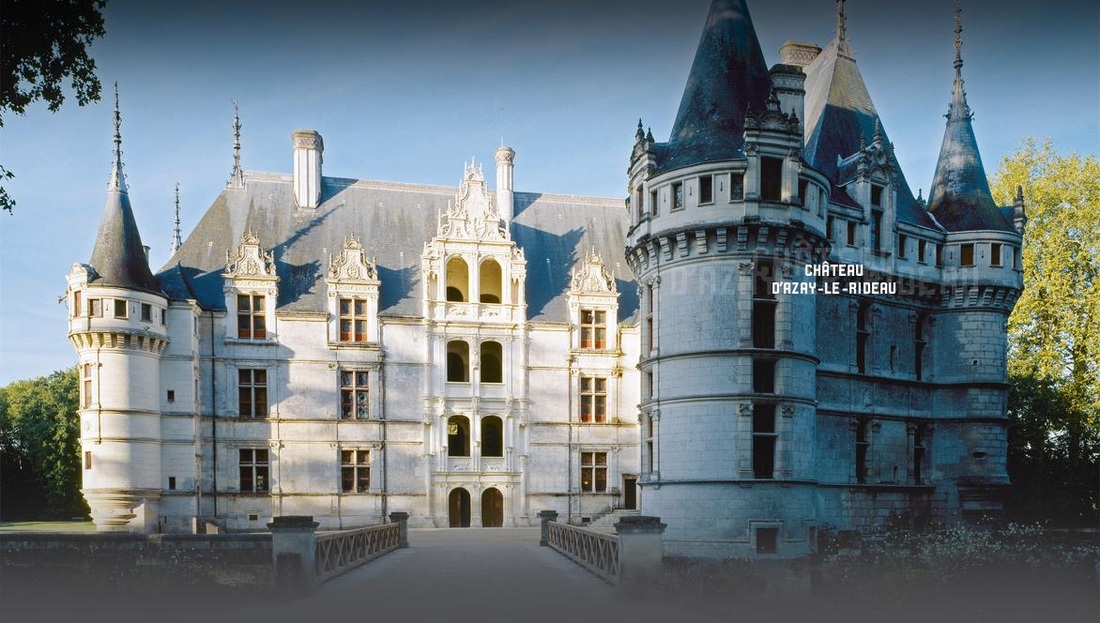The château of Azay-le-Rideau
This great château, located on the river Indre in the area of the Loire Valley, was built in the period 1515 to 1527. At the origin there was on this site a medieval castle. The Treasurer-General of the French King Francis the first, Gilles Berhelot, transformed this old medieval castle which his wife inherited into one oft he most brilliant renaissance castles of France. It is renowned for its combination of architectural style and comfortable living quarters, which generally left much to be desired in castles built around this time. Gilles Berthelot's castle was so splendid that it led the king to suspect he had diverted public funds to build it. Berthelot was forced to flee, and he never saw the castle again. The king confiscated it and in turn gave it as a reward to one of his high ranking soldiers. Over the centuries it has changed hands several times, and it is now the property of the French state. Further details can be found in the site of the historical monuments of France.
